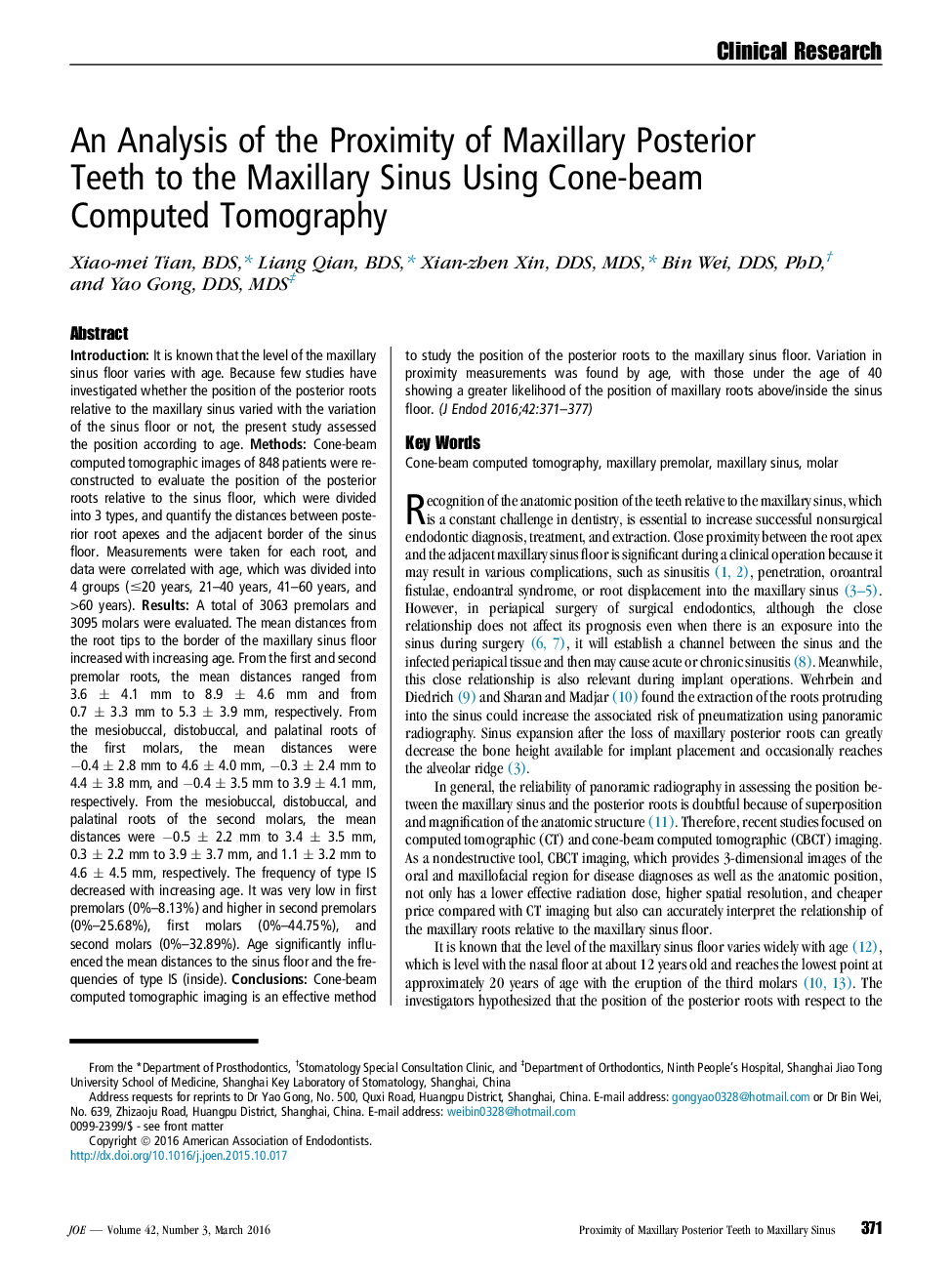| کد مقاله | کد نشریه | سال انتشار | مقاله انگلیسی | نسخه تمام متن |
|---|---|---|---|---|
| 3147921 | 1197382 | 2016 | 7 صفحه PDF | دانلود رایگان |
IntroductionIt is known that the level of the maxillary sinus floor varies with age. Because few studies have investigated whether the position of the posterior roots relative to the maxillary sinus varied with the variation of the sinus floor or not, the present study assessed the position according to age.MethodsCone-beam computed tomographic images of 848 patients were reconstructed to evaluate the position of the posterior roots relative to the sinus floor, which were divided into 3 types, and quantify the distances between posterior root apexes and the adjacent border of the sinus floor. Measurements were taken for each root, and data were correlated with age, which was divided into 4 groups (≤20 years, 21–40 years, 41–60 years, and >60 years).ResultsA total of 3063 premolars and 3095 molars were evaluated. The mean distances from the root tips to the border of the maxillary sinus floor increased with increasing age. From the first and second premolar roots, the mean distances ranged from 3.6 ± 4.1 mm to 8.9 ± 4.6 mm and from 0.7 ± 3.3 mm to 5.3 ± 3.9 mm, respectively. From the mesiobuccal, distobuccal, and palatinal roots of the first molars, the mean distances were −0.4 ± 2.8 mm to 4.6 ± 4.0 mm, −0.3 ± 2.4 mm to 4.4 ± 3.8 mm, and −0.4 ± 3.5 mm to 3.9 ± 4.1 mm, respectively. From the mesiobuccal, distobuccal, and palatinal roots of the second molars, the mean distances were −0.5 ± 2.2 mm to 3.4 ± 3.5 mm, 0.3 ± 2.2 mm to 3.9 ± 3.7 mm, and 1.1 ± 3.2 mm to 4.6 ± 4.5 mm, respectively. The frequency of type IS decreased with increasing age. It was very low in first premolars (0%–8.13%) and higher in second premolars (0%–25.68%), first molars (0%–44.75%), and second molars (0%–32.89%). Age significantly influenced the mean distances to the sinus floor and the frequencies of type IS (inside).ConclusionsCone-beam computed tomographic imaging is an effective method to study the position of the posterior roots to the maxillary sinus floor. Variation in proximity measurements was found by age, with those under the age of 40 showing a greater likelihood of the position of maxillary roots above/inside the sinus floor.
Journal: Journal of Endodontics - Volume 42, Issue 3, March 2016, Pages 371–377
